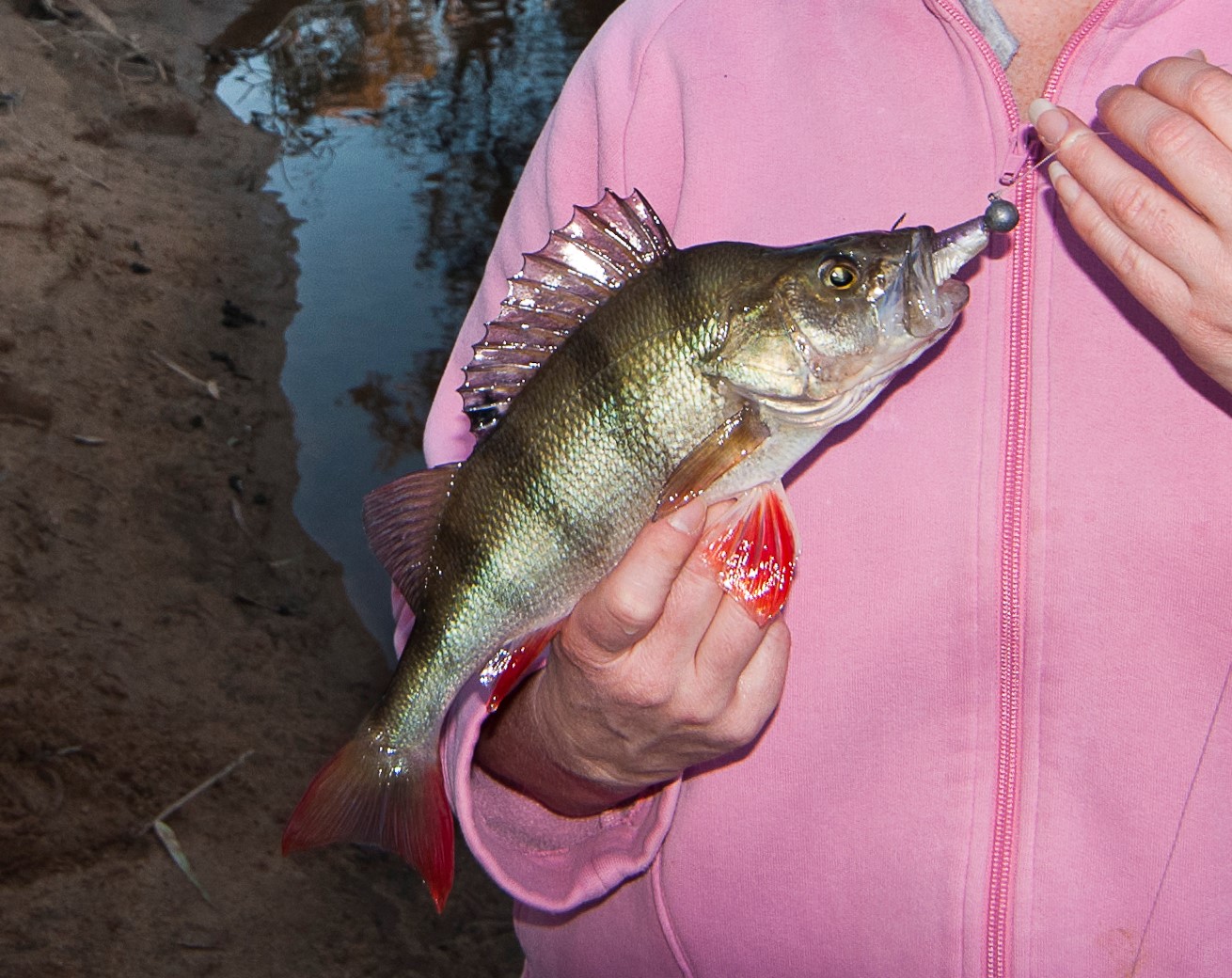
How to catch redfin
Lake fishing
Redfin can turn up when fishing for golden perch or other species, however you're more likely to land a catch if you get specific with your techniques and locations and use smaller sized lures and baits. Redfin are very aggressive schooling fish and respond well to baits and lures, so if one technique or location isn't working it can pay to mix things up. Their preferred habitat can vary, but look out for structure of some kind (submerged logs, rock walls, weed bed lines or standing timber of all sizes) and you might find your luck improves. In fact, it's not uncommon to see reddies swarm around the base of larger submerged trees - although they can still be found in lakes with little to no structure. Hence, a sounder will be a great asset. As a bonus, catching golden perch or trout while employing any of these techniques is very common.
Trolling
Redfin tend to swim in schools, spotting this habit will go a long way to boosting your success. Whilst not many people troll for redfin, it's a great way to find them as bycatch when trolling for golden perch. Good success can be had in lakes by trolling smaller bibbed crankbaits/deep divers, lipless crankbaits, and even soft plastics at depth ranges from 4 to 12 meters (or even less in more shallow lakes). Anything is worth a try - if it moves slowly near the bottom and isn't too large there's a good change a reddie will bite. Try 2-3 lines in the water with different lures to see what the fish respond to as it may change day to day. Usually trolling is better conducted on banks with less timber, or in areas where there is larger dead timber standing vertically in the water. The downside to trolling is getting hung up or snagged, and a balance must be struck between being in a good zone, and not having to constantly untangle yourself! Once you find what's working, you can turn around and go over the area again, or use another technique if you prefer, but at least you'll have zoned in on them!
Boat-based lure casters
Redfin are usually caught in lakes fishing vertically in and around trees, taking up a position stationery above a school of fish and dropping vertically down to them. Note that the vertical approach relies on moving every 20 minutes or so (or using a good sounder to find the schools in the first place). Small soft plastic lures and small vibes are very effective in these circumstances. You can get away with quite aggressive hops and pauses with lures, which tends to ignite the redfins aggressive and competitive nature.
Bait fishers
Bait fishing is no doubt the most common technique for reddies. Redfin fishers can do extremely well fishing a variety of natural baits. Earthworms, small yabbies and freshwater shrimp all work well, and local gudgeon is a favourite. With bait fishing it pays to use rigs that keep your bait anchored relatively in the same position to avoid getting snagged too much. A running sinker or a paternoster/dropper rig work well, and a size #1 hook is ideal. Concentrate your efforts around standing timber and move often if not getting a bite. In some circumstances when lake fishing reddies can be encountered in open water well away from structure - and this is where good electronics show their worth.
Shore-based fishers
Active anglers will love to walk or wade their way around lakes with a spin rod and employ a method of cast and move. By firing a series of fanned out casts in front of you you can cover a good piece of the shoreline and stand a great chance of intersecting active redfin. This prospecting style of fishing will be effective using the same lures you might troll with - favouring lures that can be cast a long way into deeper water, aiming to bounce your lure off the bottom of the lake as you retrieve back to shore. Longer rods will help you cast further to cover more water, so a 7-to 7.5-ft medium action rod will be ideal. Combine this with a 2500-sized reel, 3kg braided line, and 3 or 4kg leader of monofilament or fluorocarbon of about 6ft is perfect. Bait fishers be sure to add in a good rod holder so you can anchor things down and don’t end up with a rod skating off into the water!
